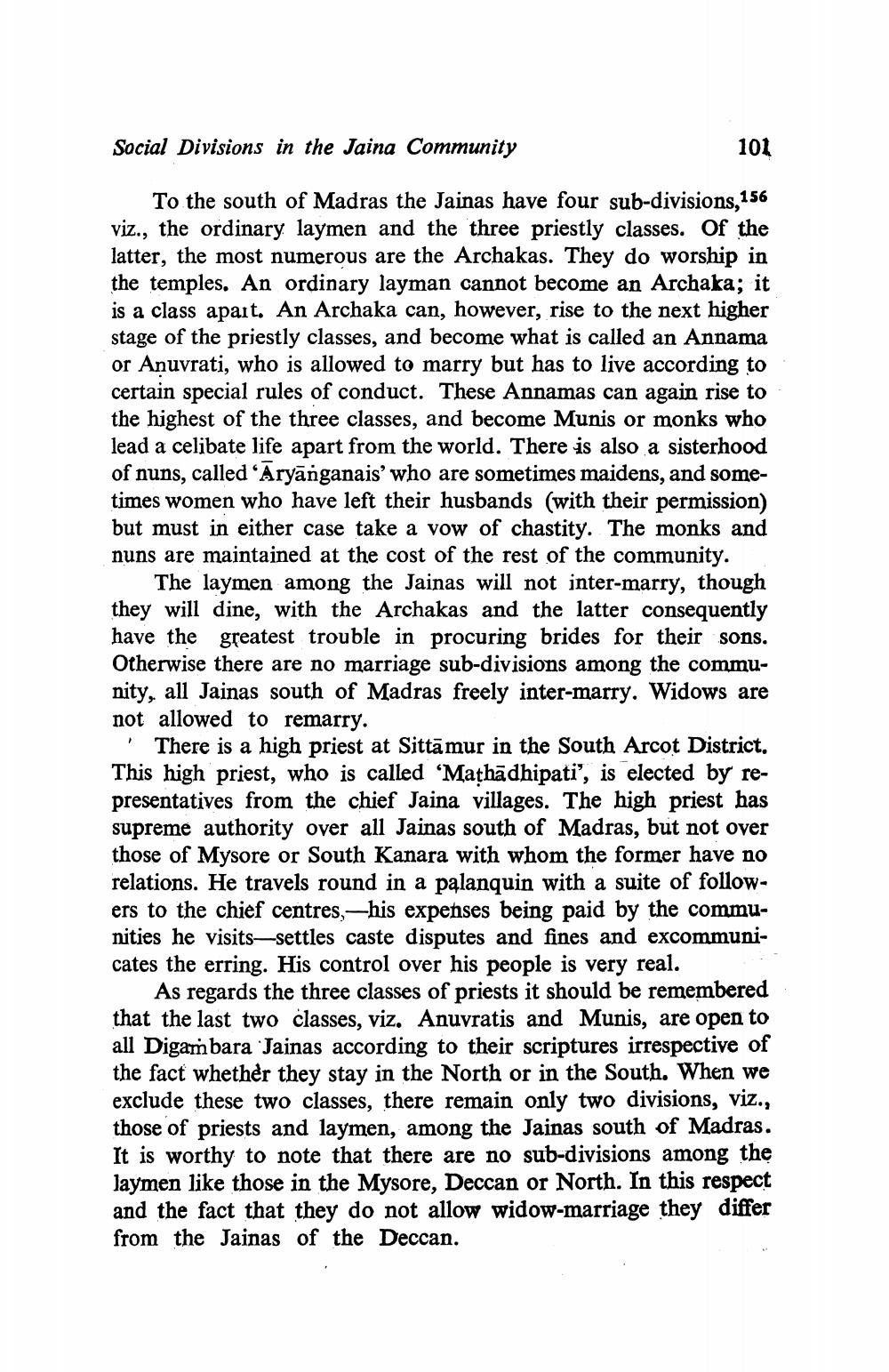________________
Social Divisions in the Jaina Community
101
To the south of Madras the Jainas have four sub-divisions, 156 viz., the ordinary laymen and the three priestly classes. Of the latter, the most numerous are the Archakas. They do worship in the temples. An ordinary layman cannot become an Archaka; it is a class apait. An Archaka can, however, rise to the next higher stage of the priestly classes, and become what is called an Annama or Anuvrati, who is allowed to marry but has to live according to certain special rules of conduct. These Annamas can again rise to the highest of the three classes, and become Munis or monks who lead a celibate life apart from the world. There is also a sisterhood of nuns, called 'Aryānganais' who are sometimes maidens, and sometimes women who have left their husbands (with their permission) but must in either case take a vow of chastity. The monks and nuns are maintained at the cost of the rest of the community.
The laymen among the Jainas will not inter-marry, though they will dine, with the Archakas and the latter consequently have the gseatest trouble in procuring brides for their sons. Otherwise there are no marriage sub-divisions among the community, all Jainas south of Madras freely inter-marry. Widows are not allowed to remarry.
! There is a high priest at Sittāmur in the South Arcot District. This high priest, who is called 'Mathādhipati', is elected by representatives from the chief Jaina villages. The high priest has supreme authority over all Jainas south of Madras, but not over those of Mysore or South Kanara with whom the former have no relations. He travels round in a palanquin with a suite of followers to the chief centres,-his expenses being paid by the communities he visits-settles caste disputes and fines and excommunicates the erring. His control over his people is very real.
As regards the three classes of priests it should be remembered that the last two classes, viz. Anuvratis and Munis, are open to all Digambara Jainas according to their scriptures irrespective of the fact whether they stay in the North or in the South. When we exclude these two classes, there remain only two divisions, viz., those of priests and laymen, among the Jainas south of Madras. It is worthy to note that there are no sub-divisions among the laymen like those in the Mysore, Deccan or North. In this respect and the fact that they do not allow widow-marriage they differ from the Jainas of the Deccan.




